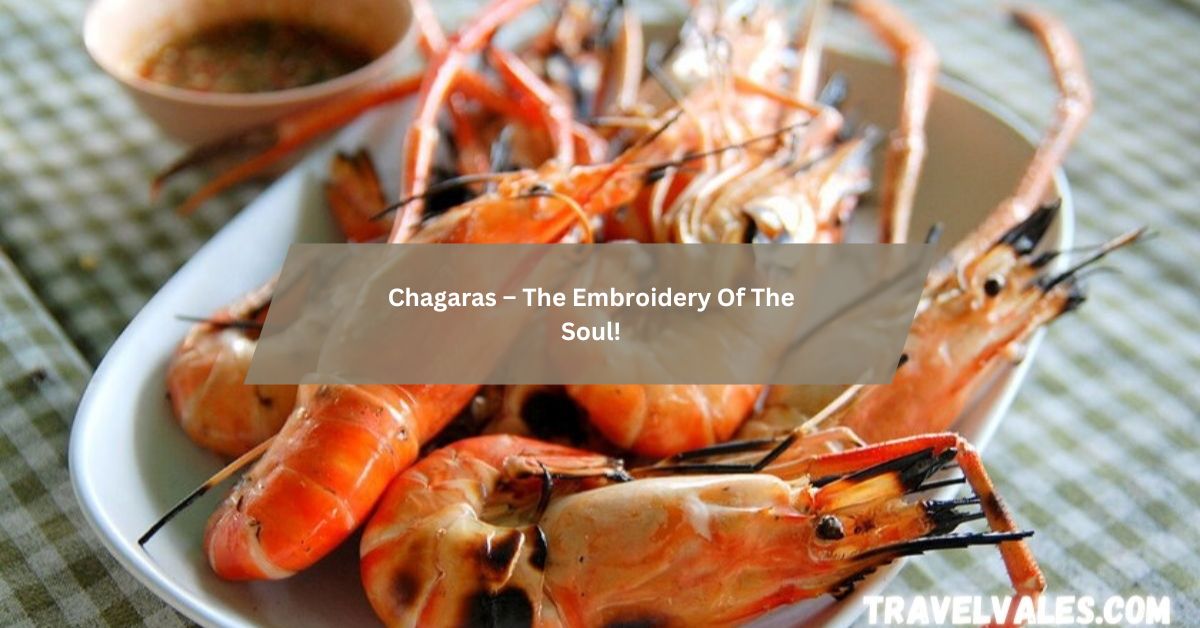Chagaras, known as the “embroidery of the soul,” is a captivating art form with roots deep in tradition and cultural heritage.
This intricate craft weaves together the essence of history, artistry, and symbolism, captivating hearts worldwide with its beauty and depth.
What Is The Origin Of Chagaras Embroidery?
Chagaras embroidery traces its origins to ancient nomadic cultures, where it served both decorative and storytelling purposes.
These early artisans used chagaras to narrate tales of their lives, beliefs, and journeys, blending art with identity in a way that transcended mere stitching. Its development over centuries reflects the rich tapestry of cultural exchanges and adaptations.
How Is Chagaras Embroidery Used In Different Cultures?
Across various cultures, chagaras holds a revered place, adapting its techniques and motifs to fit unique traditions.
From the Middle East to Central Asia, each community has infused chagaras with local stories and symbols, making it a vibrant part of their cultural heritage.
It’s used in garments, household items, and ceremonial artifacts, each piece echoing the soul of its makers.
What Are The Traditional Uses Of Chagaras In Daily Life?
Chagaras finds its way into everyday life through embroidered garments, linens, and decorative items. Each stitch tells a story, reflecting the values, beliefs, and aspirations of the community.
This integration of art into daily utility not only beautifies but also preserves cultural narratives and traditions.
How Does Chagaras Embroidery Play A Role In Rituals And Ceremonies?
In rituals and ceremonies, chagaras is more than decoration; it is a bearer of blessings, protection, and heritage.
Whether adorning bridal attire, funeral shrouds, or newborn garments, chagaras embroidery signifies the spiritual and emotional milestones of life. Its threads bind generations, carrying forward the cultural legacy with every stitch.
Some Common Motifs And Symbols Used In Chagaras Embroidery?
Chagaras embroidery often features motifs inspired by nature, mythology, and cultural heritage. These designs are rich in symbolism, from floral patterns symbolizing growth and beauty to geometric shapes representing the universe’s order. Each motif is a piece of a larger narrative, adding layers of meaning to the artwork.
How Has Chagaras Embroidery Evolved Over Time?
Over time, chagaras has evolved, embracing new influences and adapting to changing societal norms. While maintaining its traditional essence, it has incorporated contemporary elements, ensuring its relevance in modern times.
This evolution has helped chagaras remain a dynamic and cherished art form, bridging the past with the present.
What Materials Are Typically Used In Chagaras Embroidery?
Chagaras embroidery typically uses locally sourced threads, needles, and fabrics, ensuring authenticity and connection to the cultural roots.
These materials are chosen not only for their quality but also for their ability to carry the essence of the tradition in every stitch. The choice of materials plays a crucial role in preserving the integrity and beauty of the art form.
How Can One Learn Or Master Chagaras Embroidery?
Learning chagaras embroidery requires patience, dedication, and a passion for the craft. Many artisans spend years honing their skills, learning from mentors, and practicing the intricate techniques passed down through generations.
Workshops, online tutorials, and local artisan groups are excellent resources for anyone eager to master this beautiful art.
What Challenges Does Chagaras Embroidery Face Today?
Chagaras embroidery faces challenges such as commercialization and cultural appropriation. These issues threaten the authenticity and heritage of the craft, making preservation efforts critical.
By supporting fair trade practices and empowering local artisans, we can help safeguard chagaras for future generations.
How Can People Support The Preservation Of Chagaras Embroidery Traditions?
Supporting the preservation of chagaras involves advocating for fair trade, purchasing authentic products, and raising awareness about its cultural significance.
Engaging with artisans, attending exhibitions, and promoting traditional crafts in modern markets are effective ways to ensure this beautiful art form thrives.
What Is The Cultural Significance Of Chagaras In Different Communities?
In different communities, chagaras embodies the cultural spirit, serving as a symbol of heritage and identity.
It reflects the community’s values, beliefs, and historical narratives, making it an essential element of cultural expression and continuity. Through its intricate designs, chagaras connects people to their roots and shared history.
How Is Chagaras Embroidery Integrated Into Modern Fashion And Interior Design?
Chagaras has found a new lease on life in modern fashion and interior design, where it blends tradition with contemporary style.
Fashion designers incorporate chagaras embroidery into haute couture, while interior designers use it in cushions, wall hangings, and other decor items, adding warmth and cultural depth to spaces.
What Are The Economic Benefits Of Chagaras Embroidery For Artisans?
Chagaras embroidery offers significant economic benefits to artisans by providing employment opportunities and generating income.
The growing demand for authentic, handcrafted products has opened new markets, allowing artisans to sustain their livelihoods while preserving their cultural heritage. This economic impact is crucial for the vitality and survival of the craft.
FAQ’s:
1. What is the best way to start learning chagaras embroidery?
Begin by finding local classes or online tutorials. Practicing basic stitches and gradually progressing to more complex patterns will build your skills.
2. How long does it take to master chagaras embroidery?
Mastery varies by individual, but many artisans take several years to refine their skills and perfect their technique.
3. Can chagaras embroidery be customized for modern designs?
Yes, many artisans now blend traditional chagaras motifs with modern designs, creating unique and contemporary pieces.
Conclusion:
Chagaras is more than just embroidery; it is a vibrant thread in the tapestry of human culture, weaving stories, traditions, and artistic beauty into every stitch.
By celebrating and supporting this exquisite art form, we ensure that its rich heritage continues to inspire and enchant for generations to come.
